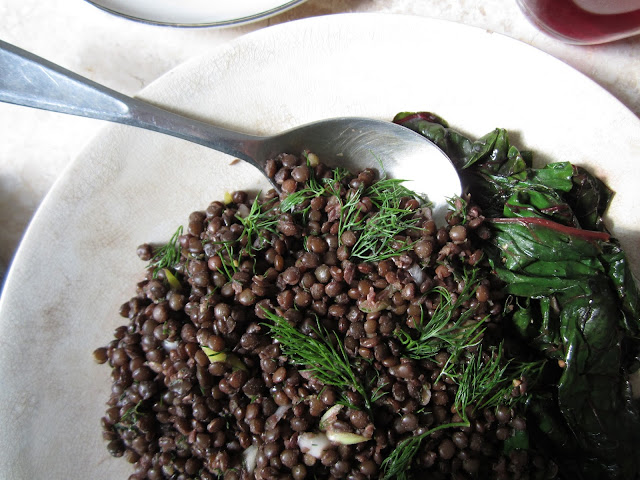 |
| khichri |
Cooking is still on the agenda though. But before I tell you about what I am making, I want to tell you about my day yesterday. I spent the afternoon yesterday at the dentist. I had my root canal removed, and one of my mercury fillings. I go back tomorrow to have the other one out. This is part of my- beat cancer boot camp- plan. We all know mercury is toxic, and I believe, as do many others, that having mercury in your mouth harms your immune system, as it leaches from the filling into your membranes. Root canals are also a problem because they are dead teeth. They have no blood supply, so they often contain dangerous bacteria. I've been reading about these dangers for decades, but who wants to spend a lot of money taking out teeth and fillings that you have spent a lot of money having put in. Well...since I have cancer. I do! I am doing everything I can think of to make my body wake up and do the right thing-STOP! making cancer cells.
Mercury removal must be done safely, otherwise you could release more mercury into your mouth and cause a toxic overload. I thought I was going to have to go to Tijuana (yes Mexico) or Montreal to have it done. Safe removal is not the standard practice, and I was having a hard time finding someone in the U.S.. Then I discovered a dentist in Groton MA who does it. That's only an hour and a half away!
When I arrived they took a full mouth X-ray and then explained the procedure. They start by covering your face with a thin white cloth . I was given pure oxygen to breath through my nostrils. Then a rubber/latex dam was fitted into my mouth to prevent any particles or vapors from hitting my mouth. They also put charcoal under my tongue to absorb the mercury in case any vapors get through. The dentist and his assistant wore heavy duty gas masks during the procedure. The kind you see people wearing to protect themselves from nuclear fallout. They also had me hold a vacuum tube that was vented to the outside of the building. All this for one little blob of silver mercury. And this thing has been sitting in my mouth for decades!
When they were done with the filling and root canal removal they gave me far-infrared waves to the site to stimulate healing, and sent me home with homeopathic remedies for pain, inflammation, and bone trauma. I feel fine today, and have no pain. It cost me a lot of money, but really, given my situation-I'm worth it.
Now back to the couch...I mean cooking. I hope I didn't lose you with my little public service announcement about mercury, because I am making a delicious dal that you will want to hear about. With this hole in my jaw I knew that soup would be the easiest thing to eat today, and given that I love dal and could eat it everyday, and have in the past, what else would I be making on a snowy day like today. It's warm and comforting. It's substantial and filling. It's nutritious and delicious. And it reminds me of India...ahhh India-warm sunny India.
Dal With rice and Vegetables
Serves 5-6
Dal ingredients:
1c. moog dal
1/4 c. basmati rice (or quinoa)
6 c. water
1/2 tsp. turmeric
1 tsp. ground cumin
1/2 tsp. ground coriander
1 medium onion chopped
You can use any combination of vegetables you like. I used what I had, but cauliflower, potato, and peas would be nice also. Carrots are a good addition.
4 plum tomatoes chopped
1 bunch of spinach chopped
1/2 c. peas
1 1/2 tsp. of salt
1/4 tsp. black pepper
cilantro to garnish
Tarka ingredients
1T. olive oil
1/2 tsp. mustard seeds
1/2 tsp. cumin seeds
1 1/2 tsp. red pepper flakes
2 T. chopped onion
1 chopped green chili (optional)
Start by rinsing the moong dal beans very well. You want the water to run clear. Do the same with the rice.
Add the dal and water to a heavy bottom pot. Bring to a boil, and reduce the heat to a simmer. Skim off the foam from the surface as they cook for the first few minutes. Then add the rest of the dal ingredients. Simmer for 45 minutes to 1 hr. This is like porridge. Everything is well cooked. Give it a stir once in a while to be sure it is not sticking. Add water as needed to keep it from getting pasty. You can adjust the consistency to how you like it, thin like soup, or thick like porridge.
You can make the tarka when the dal is almost done. Just heat the oil in a small frying pan. Add the seeds, and red pepper. Stir for a few seconds, then add the onion and cook until starting to brown then add the green chili (if using). Stir for another minute.
Remove the dal from the heat. Taste and adjust the salt. Add the tarka.
Top with cilantro and serve. A wedge of lime on the side is always nice.

















